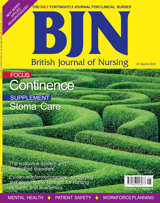Patient safety has become a recognised and valued academic discipline. There is a developing body of knowledge attached to it, and reports discussed in this column have generally offered thoughtful and well-researched information, conclusions, recommendations, and advice. Patient safety has many aspects to it—subjects covered can include psychology, law, ethics, sociology, business subjects such as leadership skills, change management and communication studies, as well as the health sciences, medicine, nursing and allied professions.
Research
In researching patient safety and looking at helpful tools and trends there is a lot of deep thinking to do. The area is a complex one with competing underpinning conceptual theories. There is also a lot of sometimes quite complex information to unpack and to practically apply. Not every suggestion that an author or contributor makes in a research paper can be or even should be adopted. Ideas need to be rigorously tested, reviewed and discussed. There will nearly always be a countervailing viewpoint to consider. Such is the nature of academic discourse.
Keeping up to date
This all raises the issue of how the nurse or doctor can practically keep up to date with the increasing tide of papers and research on patient safety. Patient safety has become a global service industry with many stakeholders and agendas. How do we sort out which report or paper is relevant to us and whether it is authoritative?
Only through discussion and peer review can we fully answer this question. The Care Quality Commission (CQC) in its seminal report, Opening the Door to Change discussed the difficulties trusts face in dealing with what we would term an avalanche of patient safety and health quality information descending on them and their staff. All this information will require analysis and distillation and will then have to be cascaded down to very busy staff.
‘Trusts receive too many safety-related messages from too many different sources. The trusts we spoke to said there needed to be better communication and coordination between national bodies, and greater clarity around the roles of the various organisations that send these messages.’
Nurses and doctors face considerable pressures with often competing time demands in resource-constrained environments with staff shortages. It seems all too easy for staff then to cut corners with patient communication strategies when you are working in ‘battlefield’ conditions. This must always be guarded against. In the heat of the moment poor communication with the patient could well result in a complaint being made or litigation further down the line,
Don't forget the basics
There is a danger that we can focus too heavily on detailed research reports advocating changes and different approaches. Or detailing new techniques, tools, and trends. We should, however, guard against losing sight of the basics of patient safety—basics such as how to develop proper communication strategies with patients, looking at how we talk to patients and whether this can be improved.
Patient safety unplugged
In a sense, it is sometimes good to ‘unplug’ patient safety from the academic literature. This is a good grounding exercise and allows us to focus on one of the central, underpinning reasons for patients' anxiety and distress and often for suffering an adverse healthcare event. A root cause of some Never Events errors in the NHS, such as those involving wrong site surgery, is poor communication between health professional and patient, or between health professionals (NHS England/NHS Improvement, 2022). Never Events are unforgivable by any measure of the word. We can see instances of surgical procedures being performed on the wrong patient, the wrong limb and so on. Sadly, Never Events can have the most profound of consequences including the death of the patient.
Litigation and complaints
We know that poor patient communication by a nurse or doctor could also lead to the patient resorting to making a formal compliant and possibly litigation:
‘Themes emerging from the interviews identified that staff reactions fell below the standards expected. Explanations or apologies were deemed to be rare or insufficient when they were given. Several interviewees remarked that, had these initial processes been handled better, they may not have pursued their claim.’
Behavioural Insights Team, 2018:19
Poor patient communication and the link with litigation was also discussed by Birks et al (2018) and there is a clear need for further detailed research into this link:
‘Strong evidence supporting a direct association between improved communication and reductions in litigation was limited, however some of the qualitative reports provided powerful observations around how communication may have an important role in moderating the sometimes-challenging relationships that occur when the views of professionals and families are not well-aligned.’
Birks et al, 2918:22
Good communication principles
Communicating with others is a basic skill that we all need to maintain in our daily lives to survive. This skill can be fine-tuned and there is no shortage of publications offering advice in this area. NHS England/NHS Improvement (2021) has produced guidance on patient communication core principles within the context of COVID-19.
The advice offered is thoughtful and reflective, providing an excellent focus on key patient communication issues. Headings include ‘personalised’, ‘patient safety’, ‘clear language’ and ‘shared decision-making’. The advice on the use of clear language can be seen to clearly advance patient safety and improve patient–professional interaction:
‘Language should be clear, accessible and easy to understand. This should apply to written and verbal communication with patients … Sometimes, technical terms are needed but these should be explained, or avoided when possible. Try to avoid language that may deter patient involvement in discussions about their care or reduce their choice.’
NHS England/NHS Improvement, 2021: 6
None of this is ‘rocket science’ but rather the application of common sense. The key point is for the nurse or doctor to try to just stand back from everything they are doing, if they can, and ask themselves how they would like to be talked to if they were in the patient's position? Everyone asking that question would want to see clear and unambiguous language used.
The advice on communication discussed in the reports above sounds obvious and you could question whether it should even be stated. However, it is clear from reading litigation cases and reports of complaints and safety reviews that major patient communication errors do take place with alarming regularity. Sadly, these can have the most profound consequences on the patient, leading to personal injury and even death. The Cumberlege report had this to say:
‘We heard about the failure of the system to acknowledge when things go wrong for fear of blame and litigation. There is an institutional and professional resistance to changing practice even in the face of mounting safety concerns. There can be a culture of dismissive and arrogant attitudes that only serve to intimidate and confuse.’
Verbal communication
A discussion from the British Heart Foundation (Chan, 2020) provides tips on improving communication practices with patients in the context of face-to-face consultations. These include:
- Be attentive
- Ask open questions
- Be curious
- Summarise throughout
- Involve friends and family
- Use the right tone
- Be aware of your patient's situation
- Be aware of bias.
The tips also include the importance of keeping good clinical records of consultations.
‘Accurate documentation of our exchanges with patients [makes] sharing information with others in the healthcare team much easier and patients do not have to repeat their story over and over again.’
Cardiac genetic nurse Tootie Bueser, quoted in Chan, 2020
Record keeping
In a busy working environment record keeping can often be seen as a chore. However, it should be seen as an important professional skill to develop and apply. Good record keeping is one of those basic tenets of patient safety that we should never forget. It is also inextricably linked to good communication processes. We can be wrong-footed by poor records and that can affect how we speak to patients. Poor records may even result in a surgical procedure on the wrong patient, or another Never Event. It is important to remember the duty of candour and for nurses and doctors not to display defensive attitudes when things go wrong.
Many lawyers and judges could well maintain in a case that if something is not recorded, then it never happened. Good record keeping is essential should a case go to court. If records are poor, it becomes very hard to defend a health professional or trust who is alleged to have been negligent. This point was made by the Getting It Right First Time team and NHS Resolution:
‘Panel law firms can find it difficult to defend trusts in clinical negligence cases due to poor or incomplete documentation by clinicians. In a busy clinical role, it can be difficult to always ensure that documentation is sufficiently robust for legal scrutiny.’
Conclusion
We have made a clarion call to not neglect the basic tenets of patient safety when undertaking research, making policy, and developing education and training programmes. Issues such as good communication practices and talking properly to patients are key fundamentals in developing an NHS patient safety culture. A lot of the principles can also be seen to be based on the premise of sound common sense. We can all use the benchmark of how we would wish to be talked to ourselves—treat others the way you would want them to treat you. It is important to refresh our professional record-keeping and communication skills.
The imperative here is not only to acknowledge and reflect on the safety and quality of patient care but also to respect the patient's individual autonomy. We can also hopefully minimise the risk of complaints and litigation occurring.


